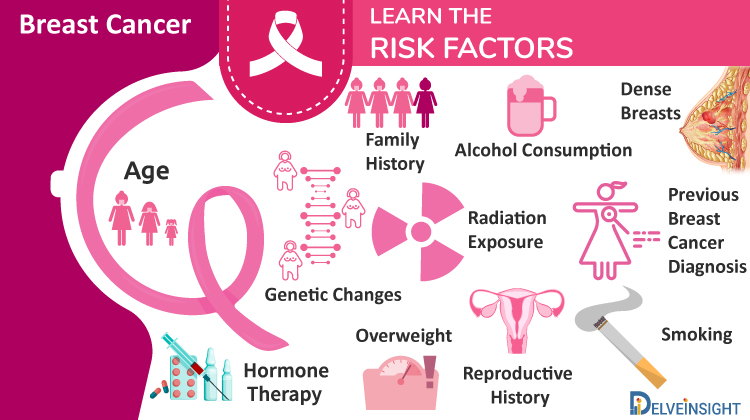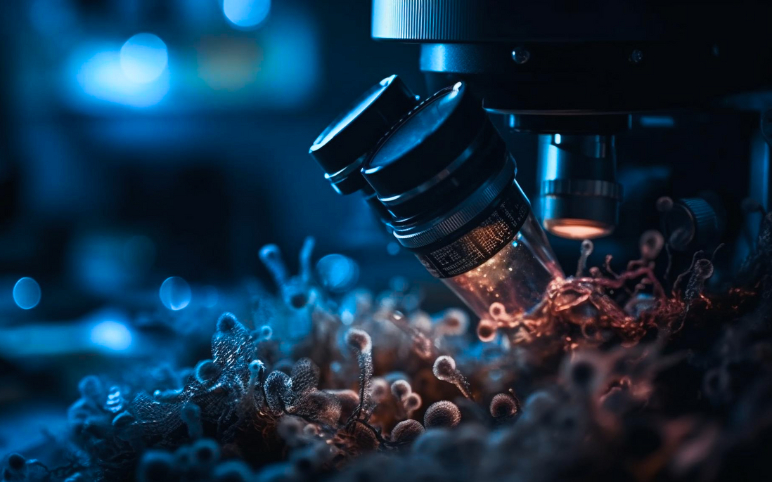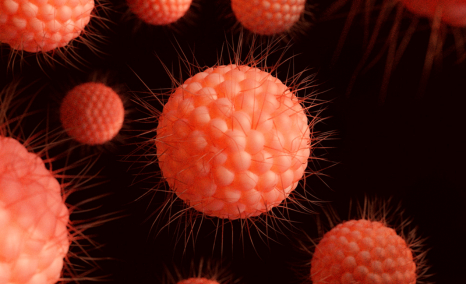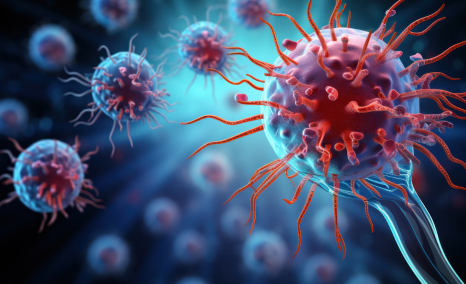Breast Cancer Insights: Identifying Symptoms and Protecting Your Health
Aug 14, 2024
Table of Contents
Breast cancer is the most common form of cancer in women. Each year, it affects over 2 million women globally and is the most significant cause of death among women. Among the many types of breast cancer, a particularly formidable foe is Triple-negative breast cancer (TNBC), which accounts for 10-20% of all cases. Other than this, breast cancer statistics show that HR+/HER2− cases were highest in the US, with about 208K cases in 2023, predominantly affecting those aged 60 to 79 years. Germany had the highest number in the EU4 and UK, with 50K cases, while Spain had the fewest. Japan reported around 43K cases. Breast cancer is the most common cancer in U.S. women, excluding skin cancers, representing about 30% of all new female cancers. The HR+/HER2− subtype is the most common, with an incidence rate of 87.2% cases per 100K women, predominantly affecting postmenopausal women.
Let’s explore the essential aspects of breast cancer to build a strong foundation for understanding this complex disease.
Downloads
Article in PDF
Recent Articles
- CHMP Reviews Takeda’s Qdenga; FDA Sets Date for Gilead’ Trodelvy Review; Odyssey’s Announce...
- Novartis’ Canakinumab for NSCLC; Novartis’s Zolgensma Updates; Trodelvy Prospects in New Breast C...
- How HR+/ HER2-Breast Cancer Emerging Drugs Will Transform The Market?
- How CDK4/6 Inhibitors Are Changing the Cancer Treatment Paradigm?
- While AZ resumes its COVID-19 vaccine trial in the UK; Merck and Gilead are busy making sizeable ...
What is Breast Cancer?
Breast cancer is a type of disease in which the cells in the breasts start to grow uncontrollably. These cells can reside in different parts of the breasts, i.e., lobules, ducts, and connective tissue, and thus on the basis of the location of cells, there are different types of breast cancers. Most commonly, breast cancer begins in lobules that are milk-producing glands. It can also begin in ducts that act as the passage of the milk from lobules to the nipples. However, very rarely, there are chances of developing cancer in connective tissues in the breasts.
Breast cancer may begin anywhere in the breasts, but through the blood or lymph system, it can spread to other parts of the body. If the cancer cell spreads to lymph nodes, there are higher chances of cancer spreading to the lymph system and metastasizing to other organs. However, not all cases of cancer metastasize.
Types and Subtypes of Breast Cancer
Breast cancer includes various types and subtypes. The main types are Ductal Carcinoma In Situ (DCIS), Invasive Ductal Carcinoma (IDC), Invasive Lobular Carcinoma (ILC), and Lobular Carcinoma In Situ (LCIS). Subtypes of IDC include tubular, medullary, mucinous, papillary, and cribriform carcinoma. Triple-Negative Breast Cancer (TNBC) lacks estrogen, progesterone, and HER2 receptors, making it more aggressive. HER2-positive breast cancer overexpresses the HER2 protein, while hormone receptor-positive breast cancer includes estrogen receptor-positive (ER+), progesterone receptor-positive (PR+), and combinations like ER+/HER2+. Other types include Inflammatory Breast Cancer (IBC), Paget’s Disease of the Breast, Phyllodes Tumors, and Angiosarcoma. Understanding these helps in personalizing treatment for better outcomes.
What are the Causes of Breast Cancer?
The causes of Breast cancer are not clearly understood. Several studies point towards a combination of factors that can be a cause of Breast cancer. However, there are risk factors that increase the likeliness of Breast cancer. This does not imply that these risk factors are the reasons behind the development of cancer. In some cases of Breast cancer, the absence of all the risk factors has also been observed, and in others, despite the presence of risk factors, no signs of Breast cancer have also been witnessed.
Some of the Risk Factors for Breast Cancer are as Follows:
Age: The risk of getting diagnosed with Breast cancer increases with age. Approximately 80% of women diagnosed with Breast cancer are 50 or older.
Family history: Some people are generally more vulnerable to developing a certain disease because of family history. The same is the case with Breast cancer. It has been observed that having a first-degree relative with Breast cancer almost doubles the risk of Breast cancer. However, this does not mean that in every instance, family history is to be blamed if more than one family member is diagnosed with Breast cancer. Breast cancer is the most common form of cancer in women, and it can be purely by chance as well.
Mutations: Talking about family history, if breast cancer runs in the genes of the family, there is a chance that some mutations, i.e., changes in the genomic mapping of the person, will be passed down to the next generations. In the case of Breast cancer, inherited mutations in certain genes such as BRCA1 (BReast CAncer gene one) and BRCA2 (BReast CAncer gene two) render women at higher risk of Breast cancer. Talking about why a mutation in this particular gene might be causing Breast cancer can be attributed to the primary role of the gene, which is to serve the damaged cells and manage the normal cell growth in breasts and ovaries.
Dense breasts: Having a dense pair usually means having more connective and glandular tissue than fatty tissue. Women with dense breasts, which are approximately 10% of the total women population, are put at a higher risk of developing Breast cancer. Further, due to difficulties in distinguishing between dense tissues and tumors, as they both appear white on mammograms. This further delays the diagnosis and increases the severity of Breast cancer.
Reproductive history: It is a well-known fact that reproductive history significantly influences the chances of Breast cancer. Several studies have noted that women who have abnormalities in the number or timing of pregnancies, age of menarche, and menopause often increase the risk of developing Breast cancer.
Hormonal levels: Elevated levels of hormones, namely estrogen and progesterone, are also associated with uncontrolled cell growth.
History of Breast cancer lump: A history of certain previous types of breast lumps or early non-invasive breast cancer also renders women susceptible to cancer.
Radiation therapy: Medical procedures such as CT scans or X-rays of the chest increase the risk of developing Breast cancer. Radiation therapy to breast to treat Hodgkin lymphoma, for instance, also increases the risk of developing Breast cancer.
Besides obesity, alcohol consumption and a sedentary lifestyle also increase the risk of developing Breast cancer.
While there are many myths about breast cancer, it’s essential to recognize the symptoms to watch for when detecting breast cancer.

How can you Reduce the Chances of Breast Cancer?
While it is necessary to keep track of the body, understand the symptoms of breast cancer, and get regular check-ups done in order to detect any form of abnormality, it is also important to refrain from adopting habits that somehow contribute to the chances of developing breast cancer. To effectively manage and reduce the risk of breast cancer, adhering to key precautions for breast cancer is crucial. Regular breast exams, including both self-exams and clinical evaluations, play a vital role in early detection. Women should perform self-exams monthly and schedule clinical exams annually with a healthcare professional. Additionally, regular mammograms are essential, as they can identify tumors or abnormalities before they are palpable. The American Cancer Society advises starting annual mammograms at age 40 or earlier for those with a family history or other risk factors. Incorporating these precautions into routine health practices can significantly enhance early detection and prevention efforts. There are certain things that lie in the hands of the individual that can lower the risks of breast cancer.
Limit alcohol intake as the alcohol increases the level of estrogen in the body hence the chances of breast cancer.
Cease smoking because it is linked with changes in the morphology of normal breast cells leading to an increase in mobility and turning them into fibroblasts, which are the major cellular components of tumors.
Regulate weight because obesity comes from several other health implications, and it also increases the risk of Breast cancer.
As a sedentary lifestyle, regular exercise results in being overweight, bad posture, and other health conditions. Studies have revealed that women who exercise regularly are at lower risk of developing Breast cancer than women who lead a physically inactive life.
A healthy diet is key to leading a qualitative life and plays a crucial role in preventing Breast cancer.
What are the Early Signs of Breast Cancer?
First and foremost, it is necessary for women to be vigilant and understand their breasts. By noticing, feeling, and checking their breasts regularly, women can notice subtle signs of Breast cancer.
The signs and symptoms of Breast cancer vary with individuals. Some of the early signs of Breast cancer in the body are:
- A lump or swelling that might not be visible to the eye but can be felt in the breast, armpits, or chest
- A change in the color of the skin of the breast
- Nipple inversion or rashes around the nipple
- Any unusual discharge from either of the nipples
- Sudden changes in the size or shape of the breasts
How do These Signs Differ in Case, Breast Cancer has Spread to Other Parts?
However, if, due to negligence or some other reason, there is a delay in the treatment of Breast cancer, it can spread to other organs or parts of the body. Symptoms or signs that signify that Breast cancer has spread to other parts of the body are:
- Sudden bone pain. Bone fractures due to minimal injuries. Increased levels of calcium in the blood.
- Pain in ribs. Loss of appetite. Jaundice. Anemia. Sudden weight loss. Vomiting.
- Affected lungs. Breathing shortage. Persistent coughing.
When and How is Breast Cancer Diagnosed?
There is no hard and fast rule that after noticing the symptoms, only a person should get checked for Breast cancer. Whether there are symptoms or not, whether the woman has a family history or not, it is necessary to get routine check-ups for Breast cancer. Physicians use different diagnostics methods to detect Breast cancer. Some of the diagnosis methodologies are:
Screening tests are routine tests performed on women who have no symptoms of breast cancer and appear healthy. These tests, however, are very helpful in detecting cancers at the earliest possible stages. Screening includes laboratory tests to check blood for the presence of biomarkers and other fluids, genetic tests in case there is a suspicion of family history, and Imaging Tests such as Ultrasound, Mammography, and MRI.
If something is detected during the Screening, then a Biopsy is performed. In this process, with the help of a needle, a small amount of breast tissue is removed for examination and confirms the diagnosis of Breast cancer.
What are the Treatment Options Available for Breast Cancer?
With advancements in technology, there is an improvement in the treatment of Breast cancer. Physicians opt for a multidisciplinary approach comprising a combination of treatment options depending on the type, severity, and stage of Breast cancer.
Surgery is the first treatment option to remove the tumor safely. Safe resection to remove either a part of the breast (lumpectomy) or the whole of the breast (mastectomy) is often considered; however, it is based on the location and size of the tumor. Further, there are other newer surgical options as well that improve the appearance of the breast, such as Skin-sparing mastectomy and nipple-sparing mastectomy.
Radiation therapy is used after surgery to kill the remaining cancerous cells. A proper angle, a correct dose, and an accurate location are decided first, and then the patient is subjected to radiation therapy. External beam radiation on the whole of the breast is also used several times. However, the areas where radiation therapy is given depend on where the tumor has spread.
Chemotherapy is another standard and viable treatment option for breast cancer patients. Chemotherapy uses a combination of drugs and is given either before or after the surgery to kill or shrink the size of the cancerous cells, which would otherwise be hard to remove with the help of surgery.
Hormone therapy, also known as hormone-blocking therapy, is used to prevent the recurrence of breast cancers by preventing hormones, especially estrogen, from accelerating the growth of the tumor.
Targeted therapy, which uses targeted drug treatments, targets abnormalities within the cells to simmer down the overproduction of cancerous cells. These therapies target cells that overproduce proteins, such as human epidermal growth factor receptor 2 (HER2), which helps breast cancer cells grow and provides nourishment. Immunotherapy is a type of biological therapy that uses the body’s immune cells to tackle cancer.
Besides available treatment options, several clinical trials are ongoing to bring novel and more efficient treatment options as well as diagnosis methods for patients living with breast cancer. As one of the pioneers in breast cancer treatment, Roche’s dedication began with the FDA approval of its first drug, HERCEPTIN (trastuzumab), on September 25, 1998. Since then, HERCEPTIN has played a pivotal role in transforming HER2+ breast cancer therapy. Subsequent approvals, such as the FDA’s approval of PERJETA (pertuzumab) in June 2012, KADCYLA (ado-trastuzumab emtansine) in February 2013, and PHESGO (fixed-dose combination of pertuzumab, trastuzumab, and hyaluronidase–zzx) in June 2020, have further expanded Roche’s HER2-targeted treatment options. These therapies have been instrumental in improving survival rates and quality of life for breast cancer patients globally.
There is also a heightened awareness in the population to understand and recognize early symptoms of breast cancer. Increased awareness and the expanding use of approved breast cancer drugs are driving this shift. Leading players in this space include Olema Pharmaceuticals, Arvinas, Immutep, AstraZeneca, Roche/Genentech, Evexta Bio, EQRx, Sermonix Pharmaceuticals, Veru Pharma, Evgen Pharma, Eli Lilly, and others. Several approved therapies in the market are efficient in improving patient outcomes. Today, the main focus of therapy remains to improve the overall survival rate, increase the quality of life, and prevent the recurrence of cancer. However, with the expansion of medical science, sooner, there will be feasible personalized treatment approaches to treat breast cancer patients.
Emerging drugs have the potential to transform the breast cancer market significantly. Novel treatments targeting specific genetic markers and pathways are being developed, promising more precise and effective therapies. These advancements include targeted therapies, immunotherapies, and combination treatments that offer hope for better outcomes and fewer side effects. As these emerging drugs progress through clinical trials and gain approval, they will likely become integral components of breast cancer treatment regimens. This transformation will improve survival rates and enhance patients’ quality of life, offering more personalized and tailored treatment options that address the unique characteristics of each individual’s cancer.
Conclusion
The landscape of breast cancer treatment is undergoing a remarkable transformation, fueled by innovative therapies and a deeper understanding of the disease. The advancements in the treatment and management of HR+/HER2− breast cancer, alongside the development of new approved drugs and targeted therapies, are reshaping patient care. This progress is not only improving survival rates but also enhancing the quality of life for patients worldwide.
The continued evolution in breast cancer treatment includes significant strides in therapies for various types of breast cancer, such as Triple-Negative Breast Cancer (TNBC), HER2-positive breast cancer, and hormone receptor-positive subtypes. Emerging therapies and novel treatments targeting specific genetic markers and pathways are promising more precise and effective options. As these drugs advance through clinical trials and gain approval, they will become integral to treatment regimens, offering hope for better outcomes and fewer side effects.
As we look to the future, the integration of these cutting-edge treatments will continue to transform the standards of care, ensuring that breast cancer patients receive the most effective and personalized treatment options available. This ongoing innovation and dedication to improving patient outcomes mark a new era in breast cancer management, offering renewed hope for those affected by this challenging disease.

Downloads
Article in PDF
Recent Articles
- Eli Lilly’s Jaypirca Approval; Novartis’ Adakveo EMA Review; Janssen’s CARTITUDE-4 Study of CARVY...
- Statistical Insight on Some Common Cancers
- Lassen’s anti-IL-11 antibody; PTC’s COVID-19 trial; Lenzilumab’s result; Orca raises $192M
- HER2 Expression and its Dynamic Functional States
- While AZ resumes its COVID-19 vaccine trial in the UK; Merck and Gilead are busy making sizeable ...



